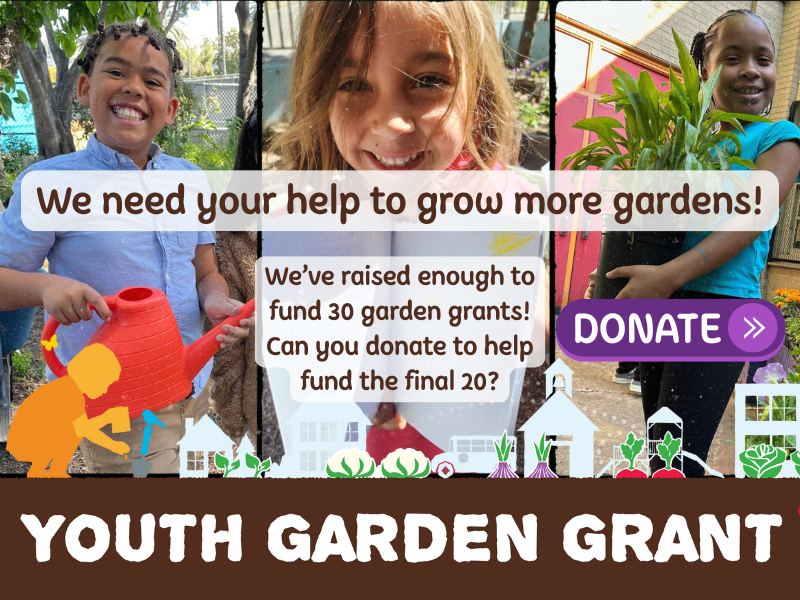Next time you see a student crunching on an apple or savoring a chocolate bar, remind them that they should thank a pollinator for providing their snack. More than 150 of our common food crops, from avocados to zucchini, rely on pollinators to move pollen among flowers to facilitate fertilization, which ultimately leads to the development of fruits and seeds. Pollination by bees, hummingbirds, moths, bats, butterflies, flies, and beetles ensures the continued existence of millions of plant species, and in turn, of most animal species, including humans – in fact, one of every three mouthfuls of our food depends on them! Most pollinators are small and quiet and may easily be taken for granted, but a process and players so essential to our survival certainly bear some investigation. The lesson plans offered in this kit offer hands-on activities for understanding and appreciating the dance of flowers and their pollinating partners, and culminates in the planning of a schoolyard pollinator garden.
Lesson 1: Make a Flower
 Overview: Students create model flowers in preparation for studying pollination.
Overview: Students create model flowers in preparation for studying pollination.
Objective: To become familiar with flower anatomy and function.
Materials
- Flower Anatomy reproducible (included in the downloadable kit)
- Assorted craft materials such as pipe cleaners, feathers, pompoms and glitter
- Classroom supplies: tape, crayons, scissors
Get the complete "Make a Flower" lesson plan in the Pollinator Activity and Lesson Plan Kit.
Lesson 2: At Blossoms Restaurant — Understanding Flower-Pollinator Pairings
 Overview: Each student assumes the role of a flower or pollinator and visits a “restaurant” where flowers are on the menu. Pollinators consider their preferences using the clues and pictures on the Pollinator Profile cards included at the end of these lesson plans. Flowers describe their “specials” using the clues and pictures on the Flower Profile cards.
Overview: Each student assumes the role of a flower or pollinator and visits a “restaurant” where flowers are on the menu. Pollinators consider their preferences using the clues and pictures on the Pollinator Profile cards included at the end of these lesson plans. Flowers describe their “specials” using the clues and pictures on the Flower Profile cards.
Objective: To understand how a specific flower attracts a specific pollinator, and how that pollinator is suited to the job based on the flower’s structure and needs.
Materials
- Pollinator Profile cards (included in downloadable kit)
- Flower Profile cards (included in downloadable kit)
- Crayons or colored markers
- Journals
Get the complete "At Blossoms Restaurant" lesson plan in the Pollinator Activity and Lesson Plan Kit.
Lesson 3: Planning a Pollinator Garden
 Overview: The class designs a pollinator garden with the aim of helping preserve struggling native pollinator populations. You may simply use this activity as an academic exercise, but if you can find a way to implement your designed garden, students will benefit not only from their real-life observations and explorations, but also from increased pride in their environmental stewardship.
Overview: The class designs a pollinator garden with the aim of helping preserve struggling native pollinator populations. You may simply use this activity as an academic exercise, but if you can find a way to implement your designed garden, students will benefit not only from their real-life observations and explorations, but also from increased pride in their environmental stewardship.
Objective: To learn about native pollinators and their habitat needs and to collect the necessary information to create a schoolyard habitat.
Materials
- Internet access and reference books for research
- Pollinator Journals
Get the complete "Planning a Pollinator Garden" lesson plan in the Pollinator Activity and Lesson Plan Kit.



